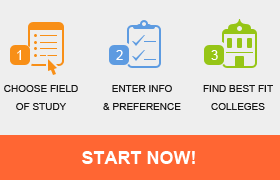Barnard College
STUDENTS AND FACULTY
Enrollment: 2,417.
Student Body: 100% female, 67% out-of-state, 5% international (32 countries represented). Asian 16%, African American 4%, Caucasian 66%, Hispanic 9%.
Retention and Graduation: 93% freshmen return for sophomore year. 22% grads go on to further study within 1 year. 6% grads pursue arts and sciences degrees. 7% grads pursue law degrees. 1% grads pursue business degrees. 5% grads pursue medical degrees.
Faculty: Student/faculty ratio 10:1. 208 full-time faculty, 94% hold PhDs, 15% are members of minority groups, 58% are women.
ACADEMICS
Degrees: Bachelors.
Classes: Most classes have 10-19 students. Most lab/ discussion sessions have 10-19 students.
Majors with Highest Enrollment: Economics, other; English language and literature; psychology.
Special Study Options: Accelerated program, cross-registration, double major, dual enrollment, exchange student program (domestic), honors program, independent study, internships, liberal arts/career combination, student-designed major, study abroad, teacher certification program, independent scholars program, BA/BS in engineering and applied science.
Honors programs: The Barnard Centennial Scholars Program, established in 1984, offers selected students the opportunity to pursue courses of independent study early in their college careers. Working closely with mentors of their choice over a period of several semesters, these young women undertake investigations in areas of personal interest that culminate in projects presented to faculty and peers. The Athena Center for Leadership Studies was launched in September of 2009 and offers a range of academic courses that examines all aspects of women’s leadership, sponsored lectures, mentoring and leadership opportunities and a lab which offers a wide range of workshops designed to teach practical elements of leadership to students, alums and other leaders in New York. Combined degree programs: BA/JD, BA/DDS, BA/MIA or BA/MBA Col. Schl. of Intern, and Public Af. Special programs offered to physically disabled students include note-taking services, reader services, tape recorders, tutors.
Career services: Alumni network, alumni services, career/job search classes, career assessment, internships, regional alumni.
Career services highlights include: Because of our urban setting, our students are exposed to extremely wide range of internship opportunities. Barnard also offers funding for some unpaid internships.
FACILITIES
Housing: Coed dorms, special housing for disabled students, women’s dorms, apartments for single students. 100% of campus accessible to physically disabled.
Special Academic Facilities/Equipment: Black Box theater, infant-toddler center, greenhouse, academic computer center, advanced architecture labs.
Computers: 60% of classrooms, 80% of dorms, 80% of libraries, 100% of dining areas, 100% of student union, 100% of common outdoor areas have wireless network access. Students can register for classes online. Administrative functions (other than registration) can be performed online.
CAMPUS LIFE
Environment: Metropolis.
Activities: Choral groups, concert band, dance, drama/theater, jazz band, literary magazine, marching band, music ensembles, musical theater, opera, pep band, radio station, student government, student newspaper, student-run film society, symphony orchestra, television station, yearbook, campus ministries.
Organizations: 100 registered organizations, 1 honor societies.
Athletics (Intercollegiate): Archery, basketball, crew/rowing, cross-country, diving, fencing, field hockey, golf, lacrosse, soccer, Softball, swimming, tennis, track/field (outdoor), volleyball.
On-Campus Highlights: Diana Center, Arthur Ross Greenhouse, Held Auditorium, Smart Media Classrooms, Liz’s Place Cafe. Environmental Initiatives: Engaged an energy consulting firm to provide energy modeling for all new building systems design and create an inventory of existing equipment to be upgraded or modified to reduce consumption, model the savings and provide a prioritized list of initiative and payback periods. The school is working with the USGBC, Con Edison and NYSERDA on other incentive-based or life cycle initiatives. The school has set up a tripartite committee to study sustainable business practices and a website to report and track our performance.
ADMISSIONS
Freshman Academic Profile: 75% in top 10% of high school class, 93% in top 25% of high school class, 98% in top 50% of high school class. 53% from public high schools. SAT Math middle 50% range 620-710. SAT Critical Reading middle 50% range 630-730. SAT Writing middle 50% range 660-740. ACT middle 50% range 28-32. Minimum paper TOEFL 600. Minimum computer TOEFL 250.
Basis for Candidate Selection: Academic GPA, recommendation(s), rigor of secondary school record, standardized test scores, character/personal qualities, extracurricular activities. Application essay, talent/ability, volunteer work. Class rank, alumni/ae relation, first generation, geographical residence, interview, level of applicant’s interest, racial/ethnic status, work experience.
Freshman Admission Requirements: High school diploma or equivalent is not required. 4 English, 3 mathematics, 3 science, (2 science labs), 3 foreign language.
Freshman Admission Statistics: 4,628 applied, 31% admitted, 45% enrolled.
Transfer Admission Requirements: High school transcript, college transcript(s), essay or personal statement, standardized test scores, statement of good standing from prior institution(s). Lowest grade transferable C-.
General Admission Information: Application fee $55. Early decision application deadline 11/15. Regular application deadline 1/1. Regular notification 4/1. Nonfall registration not accepted. Admission may be deferred for a maximum of 1 year. Credit and/or placement offered for CEEB Advanced Placement tests.
COSTS AND FINANCIAL AID
Annual tuition $38,868. Room and board $12,950. Required fees $1,678. Average book expense $1,146.
Required Forms and Deadlines: FAFSA, institution’s own financial aid form, CSS/Financial Aid PROFILE, state aid form, noncustodial PROFILE, business/farm supplement, federal income tax returns. Financial aid filing deadline 2/1.
Notification of Awards: Applicants will be notified of awards on or about 3/31.
Types of Aid: Federal Pell, SEOG, state scholarships/grants, private scholarships, the school’s own gift aid. FFEL Subsidized Stafford, FFEL Unsubsidized Stafford, FFEL PLUS, Federal Perkins, state loans, college/university loans from institutional funds.
Student Employment: Federal Work-Study Program available. Institutional employment available. Highest amount earned per year from on-campus jobs $8,325. Off-campus job opportunities are excellent.
Financial Aid Statistics: 38% freshmen, 42% undergrads receive need-based scholarship or grant aid. 40% freshmen, 44% undergrads receive need-based self-help aid. 53% freshmen, 51% undergrads receive any aid. 44% undergrads borrow to pay for school. Average cumulative indebtedness $14,706.

